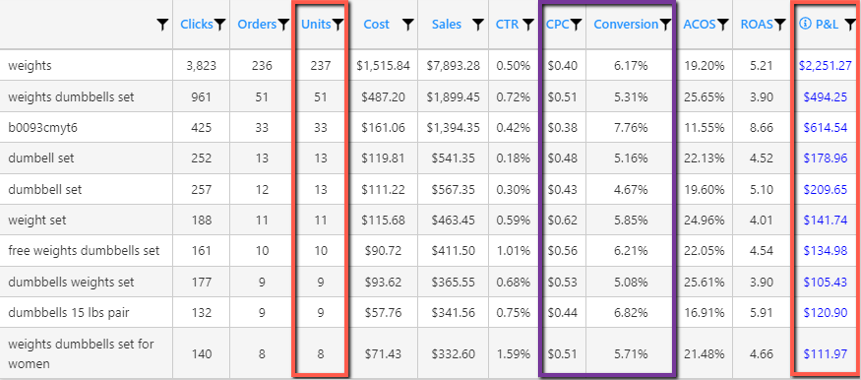- 29 Sep 2022
- 1 Minute to read
Use case for stackable bidding rules
- Updated on 29 Sep 2022
- 1 Minute to read
After running multiple tests analyzing the correlations between organic ranking and PPC keywords, the SI team noticed keywords ranking well tends to reflect a high conversion rate. (Note: This doesn't mean keywords that convert well will rank.)
It was also found that keywords with low conversion struggle to rank. Once the bids are reduced, their organic ranking often drops quickly, making it unprofitable to try ranking them.
Based on the findings of the SI team, the keywords are classified into three groups based on their conversion rate.
First group
Poor converting keywords.
These keywords are unlikely to rank, and the SI system will drop their bids quickly based on a lower target ACOS.
Due to their low bids, these keywords will stop receiving traffic or become profitable at the low bids.
The below screenshot shows how low conversion keywords with low CPC can drive decent sales and profits.

Second group
Good converting keywords with the potential to rank organically.
The SI system will adjust their bids based on a higher target ACOS to drive more traffic, ranking, and organic sales.
Third group
Keywords that do not have enough data to know if they can rank or not. The system will adjust their bids based on a target ACOS similar to its profit margin.
In essence, keywords should have different target ACOS based on their performance, with the objective to either drive upfront profits or organic sales.

The bidding algorithm can automate the whole optimization process by dynamically applying different target ACOS based on the performance of each keyword, through stacking different bidding rules on an ad group.

